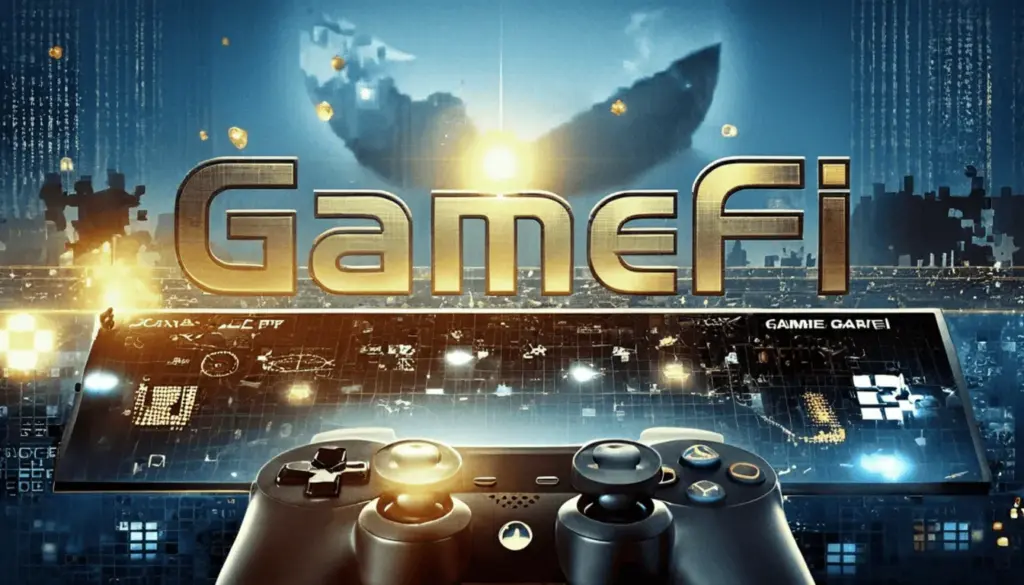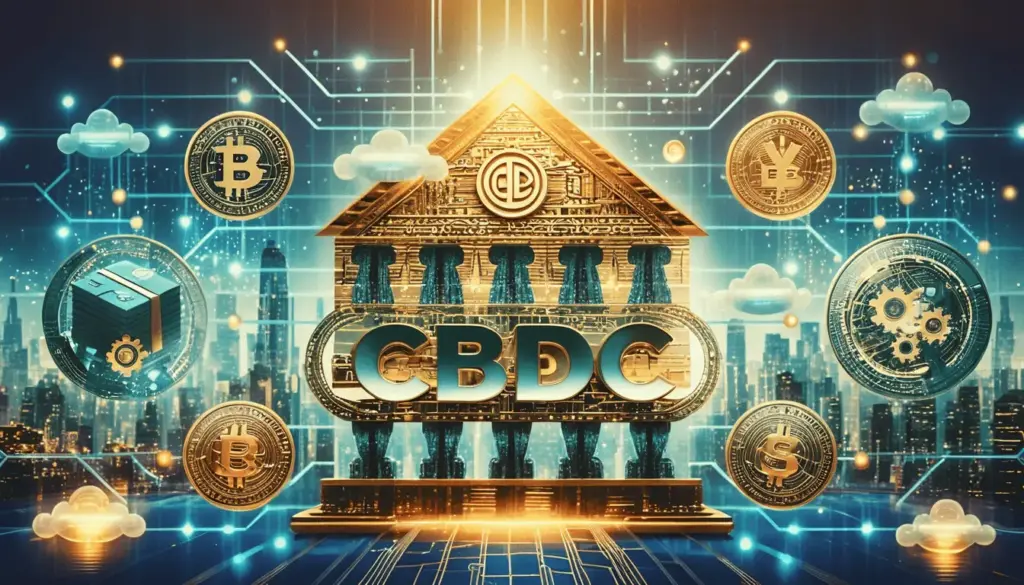Remember spending your allowance on arcade games, the thrill of victory and the sting of defeat all in one coin? Well, gaming has evolved far beyond mere entertainment. Today, thanks to the fusion of blockchain and NFT technology, it’s opening up entirely new avenues for digital earnings. Starting with the groundbreaking Play-to-Earn (P2E) model, we’re now seeing a fascinating array of opportunities like Tap-to-Earn (T2E), Move-to-Earn (M2E), Create-to-Earn (C2E), and even Watch-to-Earn (W2E).
No longer is gaming just a way to pass the time. Your efforts and engagement can now be rewarded with digital assets that translate into real income. In this article, we’ll dive into the core concept and features of GameFi, explore the key earning models and notable projects, and discuss the exciting future prospects and challenges that lie ahead.

What is GameFi? Understanding the Basics
GameFi, a portmanteau of “game” and “finance,” refers to a novel gaming ecosystem built upon blockchain technology. It seamlessly integrates game content with decentralized financial (DeFi) systems. The fundamental principle is that users can earn tangible economic benefits through various in-game activities.
📌 Key Characteristics of GameFi:
- Earning Mechanisms: Players can earn cryptocurrencies and NFTs through gameplay, simple interactions like tapping, physical movement, creative endeavors, or even watching content. These rewards can then be traded for profit.
- NFT-Based Digital Asset Ownership: In-game items, characters, and virtual land are issued as NFTs, granting users complete ownership. This ensures scarcity and enables free trading of these assets.
- Decentralized Economic Systems: Game economies operate on the blockchain, providing enhanced transparency and security. Users have greater control over their assets without reliance on a central authority.
- Community-Driven Growth: Many GameFi projects adopt a Decentralized Autonomous Organization (DAO) structure, allowing user input to influence game development and operations.
Exploring the Top 5 GameFi Earning Models
The ever-evolving GameFi landscape is powered by a diverse range of earning models. Let’s take a closer look at five of the most prominent models and some of the leading projects in each category.
✅ Play-to-Earn (P2E): Get Paid to Play
As the foundational GameFi model, P2E rewards users with cryptocurrencies or NFTs simply for playing the game. Earnings can be generated by completing quests, achieving missions, competing against other players, and participating in in-game events.
- Axie Infinity: This game involves raising and battling creatures called “Axies” to earn SLP (Smooth Love Potion) tokens. It’s considered a pioneering success story in the P2E space.
- The Sandbox: A metaverse platform where users can create their own game content and NFT assets using a voxel editor. They can then sell these creations or play other users’ content to earn SAND tokens.
- Splinterlands: A strategic card-based battle game that rewards players with DEC (Dark Energy Crystals) tokens and NFT cards for victories.
✅ Tap-to-Earn (T2E): Effortless Earnings at Your Fingertips
T2E models allow users to earn rewards through simple actions like tapping or clicking, without requiring complex gameplay. These are often found in mobile-based casual games or apps, making them highly accessible and attracting a large user base.
- Hamster Kombat: A Telegram-based T2E game where users tap the screen to nurture a virtual hamster and aim to become a crypto exchange CEO. Its straightforward mechanics and referral system have led to rapid user growth, with plans for its own token launch and airdrop generating significant anticipation.
- Notcoin: Another Telegram-based project where users mine the virtual asset Notcoin by simply tapping their screens. It achieved high initial participation and is exploring potential integration with the TON blockchain for real token conversion, drawing considerable interest.
✅ Move-to-Earn (M2E): Earn Rewards While Staying Active
M2E models track users’ physical movement, such as walking or running, and reward them with cryptocurrencies or NFTs. This represents a key aspect of “HealthFi,” combining fitness with financial incentives.
- STEPN: An app that rewards users with GST (Green Satoshi Token) for walking or running while wearing NFT sneakers. It gained significant popularity for its high early returns.
- Sweatcoin: This app rewards users with Sweatcoins, a digital asset, based on their step count. Earned Sweatcoins can be exchanged for various products and services.
✅ Create-to-Earn (C2E): Monetize Your Creativity
C2E models empower users to generate in-game content, items, or maps and earn revenue by selling or sharing their creations. This is prevalent in metaverse platforms and User Generated Content (UGC) based games, offering a direct link between creativity and earnings.
- Roblox: A leading UGC platform where users can create their own games and earn money as other users play their creations.
- Decentraland: A metaverse platform where users can own virtual land (LAND) and build various experiences on it to generate income.
- Minecraft: While not strictly a blockchain game, many users create and share content, earning revenue through various channels.
✅ Watch-to-Earn (W2E): Get Paid to Watch
A relatively newer model, W2E rewards users with cryptocurrencies or points for watching specific content like videos or advertisements. This can be an effective way to drive user engagement and enhance advertising reach.
- Hooked Protocol (HOOK): A Web3 social learning platform that rewards users with HOOK tokens for watching educational content and completing quizzes, combining Learn-to-Earn and Watch-to-Earn elements.
- OCTOPIA (OCT): Developed by Octopus Network, a Polkadot-based appchain hub, this platform rewards users with OCT tokens for watching content or participating in events related to specific appchains, encouraging ecosystem engagement through a W2E model.
- XCAD Network (XCAD): A YouTube creator tokenization platform that allows fans to earn XCAD tokens by watching and engaging with their favorite creators’ content, fostering a new connection and rewarding viewership.
The GameFi market is continuously expanding beyond these core models, with the emergence of X-to-Earn concepts where various activities can lead to earnings. Innovative models like Sleep-to-Earn and Drive-to-Earn are providing users with even broader monetization opportunities.
Furthermore, hybrid models that combine two or more earning mechanisms are gaining traction. For instance, integrating M2E and P2E allows users to exercise while playing a game and earning simultaneously. These hybrid approaches offer more diverse and engaging experiences, promising to be a driving force for the sustainable growth of the GameFi ecosystem.
The Bright Future of GameFi: Opportunities and Challenges
GameFi represents more than just a gaming trend; it’s a transformative fusion of digital entertainment and finance, offering new income streams for users and fundamentally reshaping the gaming industry. However, for the GameFi ecosystem to thrive sustainably, several challenges need to be addressed.
📌 Future Prospects of GameFi:
- Explosive Growth Potential: With the advancement of blockchain technology, the GameFi market is projected to grow rapidly. The integration of metaverse and VR/AR technologies will create more immersive experiences and new earning models.
- Mainstream Gaming Integration: As traditional major game developers increasingly incorporate GameFi elements and develop their own blockchain games, GameFi will become a significant pillar of the mainstream gaming market.
- Building New Digital Economies: GameFi is establishing novel forms of digital economies based on in-game assets, providing users with greater economic freedom and opportunities.
- Convergence with Diverse Industries: GameFi is expected to merge with various sectors beyond entertainment, including education, advertising, and social media, creating new value propositions.
📌 Challenges Facing GameFi:
- Securing Sustainable Earning Models: The high volatility and sustainability issues of early P2E models remain critical concerns. Designing stable tokenomics for the long term is essential.
- Resolving Regulatory Uncertainty: The lack of clear regulations surrounding cryptocurrencies and NFTs can hinder industry growth. Establishing clear and reasonable regulations is crucial.
- Improving User Experience: The complex interfaces and slow speeds of blockchain-based games can deter mainstream users. Technical improvements are needed to enhance user-friendliness.
- Addressing Security and Fraud Issues: GameFi platforms dealing with cryptocurrencies and NFTs are vulnerable to hacking and scams. Robust security systems and user education are vital.
In Conclusion
We’ve explored the core concepts of GameFi, the primary earning models like P2E, T2E, M2E, C2E, and W2E, and the exciting future prospects. Gaming is no longer just a leisure activity but a burgeoning arena of opportunity where you can earn in diverse ways.
While still in its early stages with challenges to overcome, the combination of blockchain technology and gaming undoubtedly presents new possibilities. We can anticipate even more innovative GameFi platforms and content emerging, enriching our digital lives in the years to come.
🔎 Read other posts in the Crypto & Blockchain category
👉 Fllow us on X(Twitter)


